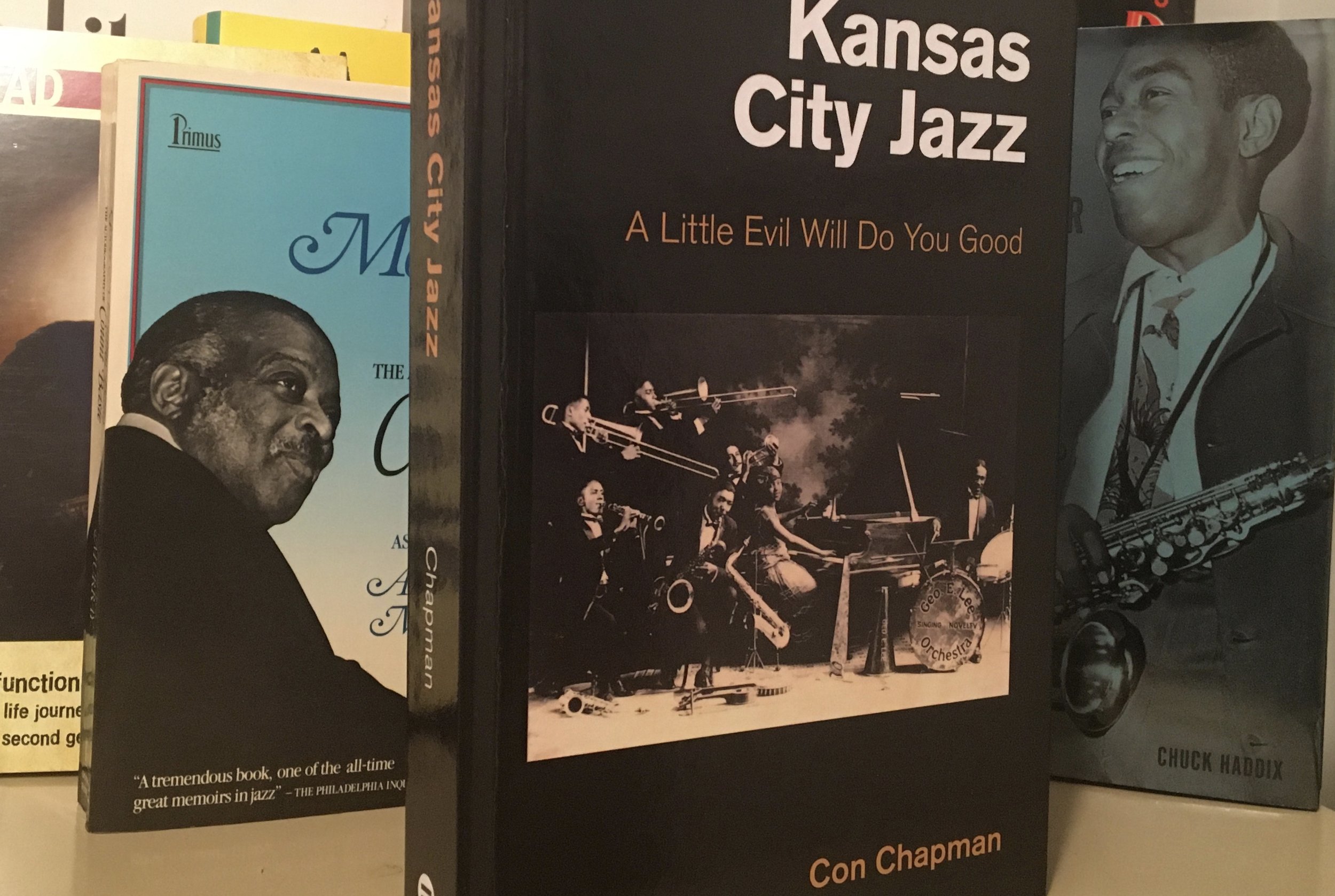Kansas City Jazz: A Little Evil Will Do You Good looks, feels and scans like a textbook. Not only is the cover drab, the heavy stock of the 370 pages gives the book the heft of a brick. Its exhaustive chronology of recording sessions and personnel changes of bands often seems like grist for a pop quiz nightmare.
Portions of Con Chapman’s new study of the heyday of Kansas City jazz are a bit of a slog, but the very elements that make the text dense- an attention to detail and a panoramic lens- make it an essential addition to the library of every person with a serious interest in the history of Kansas City.
The work draws heavily on Count Basie’s autobiography and previously published studies by historians including Stanley Crouch, Frank Driggs and Chuck Haddix. Consequently, much of the material will already be familiar to enthusiasts. As an amalgamation of these established works, however, Kansas City Jazz can be viewed as a one-stop compendium.
Chapman also has a few ideas of his own. In addition to synthesizing the work of previous scholars, he fills in gaps with investigations of overlooked nooks and crannies. These insights begin with a survey of traveling minstrel shows and circuses in the Midwest and Chapman’s insistence that ragtime’s connection to central Missouri is an integral part of the musical foundation of Kansas City.
He attempts to link regional and national musicians to Kansas City. Several pages are dedicated to Texas trombonist Jack Teagarden. Chapman also suspects the New Orleans legend Jelly Roll Morton spent time in Kansas City influencing locally based artists. Furthermore, a case is made for the impact of the innovative style of the Texas born and Oklahoma raised guitarist Charlie Christian on the sound of Kansas City jazz.
Chapman’s championing of the relatively unheralded Missouri native Wilbur Sweatman as a forebear of the likes of Bennie Moten may be the book’s biggest revelation. The familiar swing of Sweatman’s overlooked recordings suggest Chapman is right.
Impatient readers will be heartened to learn that Chapman successfully deploys the mountain of facts he accumulates in a wholly effective summation. The strong conclusion makes the textbook-like list price of $55 seem like a bargain.
